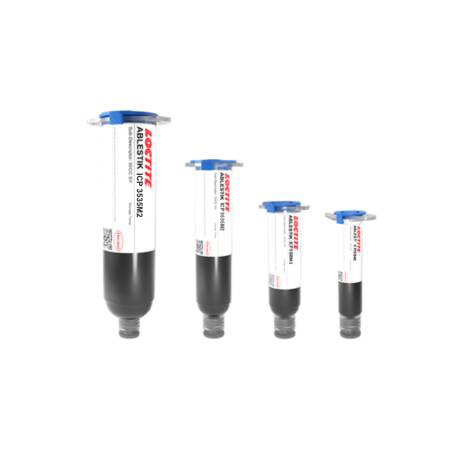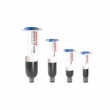LOCTITE ABLESTIK ICP 3535M2
- Adhesion stability
- Pb free alternative to solder
- Excellent for Sn terminated components
Product Description
LOCTITE ABLESTIK ICP 3535M2 electrically conductive epoxy adhesive is designed for circuit assembly applications. It is specifically recommended for mounting lower cost tin (Sn) finished components onto the conductive trace terminations of printed circuit boards or co-fired ceramic circuitry. From a chemistry standpoint it is the best option for Sn and Ni non noble metal alloys. It offer stable contanct resistance with 100% Sn terminated components. It also has improved anti-corrosion technology over CE3103WLV and CE3104WXL.
LOCTITE ABLESTIK ICP 3535M2 is designed for applications with small size components (0603, 0402) where no bleeding or wicking (absorbing liquid by capillary action) is tolerated. This rigid adhesive can be applied by stencil printing. It can also be dispensed but due to its viscosity it might require some optimization. Its operating temperature is -40 up to 175°C.
Cure Schedule:
- 1 hour @ 150°C or
- 10 minutes @ 175°C
Technical Specifications
| General Properties | |||||||
| |||||||
| Density Density Volumetric mass per unit | 4.0 kg/m3 | ||||||
| |||||||
| Physical Properties | |||||||
| Thixotropic index Thixotropic index Thixotropic Index is a ratio of a material s viscosity at two different speeds in Ambient temperature, generally different by a factor of ten. A thixotropic material s viscosity will decrease as agitation or pressure is increased. It indicates the capability of a material to hold its shape. Mayonnaise is a great example of this. It holds its shape very well, but when a shear stress is applied, the material easily spreads. It helps in choosing a material in accordance to the application, dispense method and viscosity of a material. | 4.0 | ||||||
| Viscosity Viscosity Viscosity is a measurement of a fluid’s resistance to flow. Viscosity is commonly measured in centiPoise (cP). One cP is defined as the viscosity of water and all other viscosities are derived from this base. MPa is another common unit with a 1:1 conversion to cP. A product like honey would have a much higher viscosity -around 10,000 cPs- compared to water. As a result, honey would flow much slower out of a tipped glass than water would. The viscosity of a material can be decreased with an increase in temperature in order to better suit an application | 80,000 mPa.s | ||||||
| Electrical Properties | |||||||
| Volume Resistivity Volume Resistivity Volume resistivity, also called volume resistance, bulk resistance or bulk resistivity is a thickness dependent measurement of the resistivity of a material perpendicular to the plane of the surface. | 2.0x10-3 Ohms⋅cm | ||||||
| Thermal Properties | |||||||
| Glass Transition Temperature (Tg) Glass Transition Temperature (Tg) The glass transition temperature for organic adhesives is a temperature region where the polymers change from glassy and brittle to soft and rubbery. Increasing the temperature further continues the softening process as the viscosity drops too. Temperatures between the glass transition temperature and below the decomposition point of the adhesive are the best region for bonding. The glass-transition temperature Tg of a material characterizes the range of temperatures over which this glass transition occurs. | 96 °C | ||||||
| Thermal Conductivity Thermal Conductivity Thermal conductivity describes the ability of a material to conduct heat. It is required by power packages in order to dissipate heat and maintain stable electrical performance. Thermal conductivity units are [W/(m K)] in the SI system and [Btu/(hr ft °F)] in the Imperial system. | 2.2 W/m.K | ||||||



